7 sales methodologies that drive deals forward
Finding the best sales methodology for your organization takes time and consideration. Read on to discover the pros and cons of 7 different sales methodologies, with templates to support your sales process.
Enterprise sales methodology
Implement an enterprise sales strategy to negotiate high-value, complex deals with large companies.
Discover the template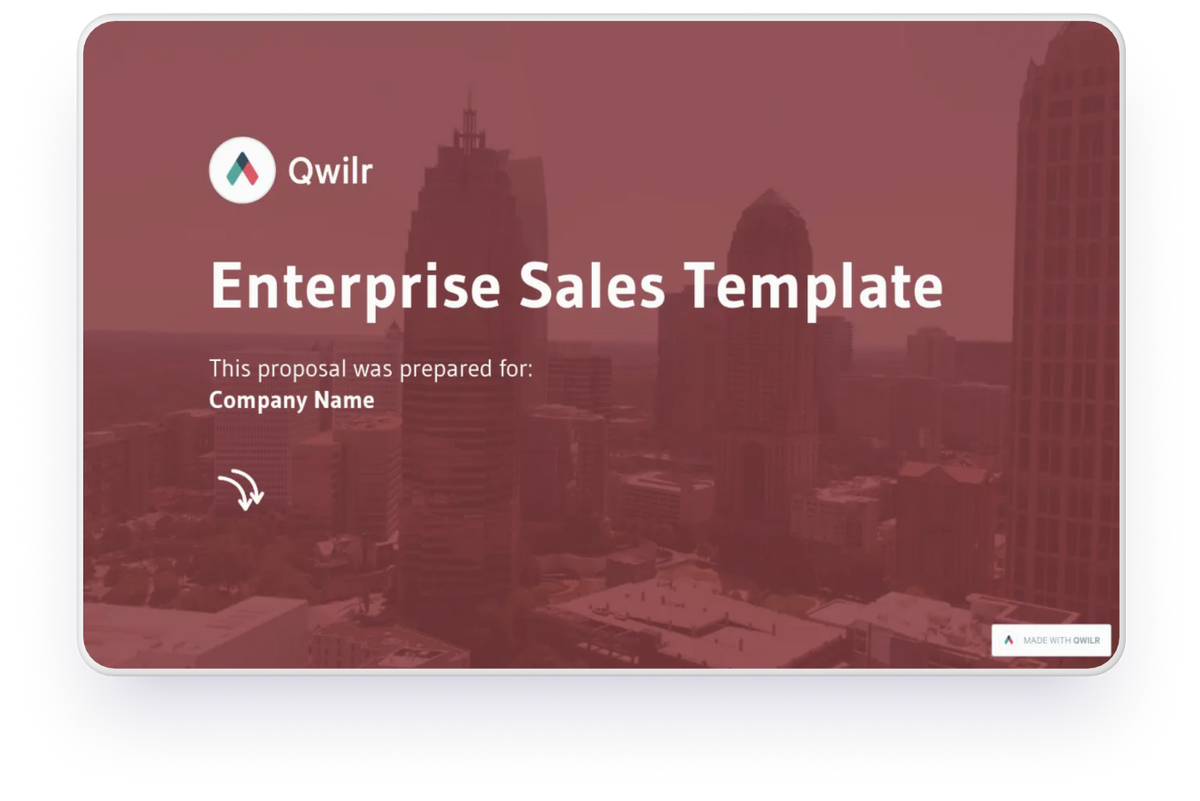
While there are different sales methodologies you can use, enterprise sales often involves four key stages:
- Discovery: Gathering information about the prospect.
- Diagnosis: Diagnosing their needs and identifying pain points.
- Design: Designing a custom solution tailored to their specific needs.
- Delivery: Closing the deal and implementing your solution.
Enterprise sales is a targeted strategy to win B2B deals. It’s often used in the software industry to offer customized solutions to large corporations. To win enterprise-level deals, your sales reps need to:
- Build trust and credibility by understanding the prospect’s needs and challenges.
- Connect with multiple stakeholders, as decisions are usually made by a committee of people rather than by an individual.
- Work closely with prospects to develop tailored solutions. Enterprise customers often have larger budgets and are likely to commit to a solution for a longer time, but will also have more specialized requests.
An enterprise sales motion has some common challenges:
- It’s time-consuming and often results in a higher customer acquisition cost, since sales reps must devote a lot of one-on-one time to each prospect.
- It often involves very lengthy sales cycles. Maintaining buy-in from multiple stakeholders for such a long time is not easy.
- Since sales cycles are so long, it takes a long time to see results.
That said, the potential revenue of closing large deals often pays off. If your sales team can build close relationships, identify stakeholders with influence, and successfully handle objections, this can be a great strategy for you.
Gap selling methodology
Close the distance between your prospect’s current and future desired state with gap selling.
Discover the template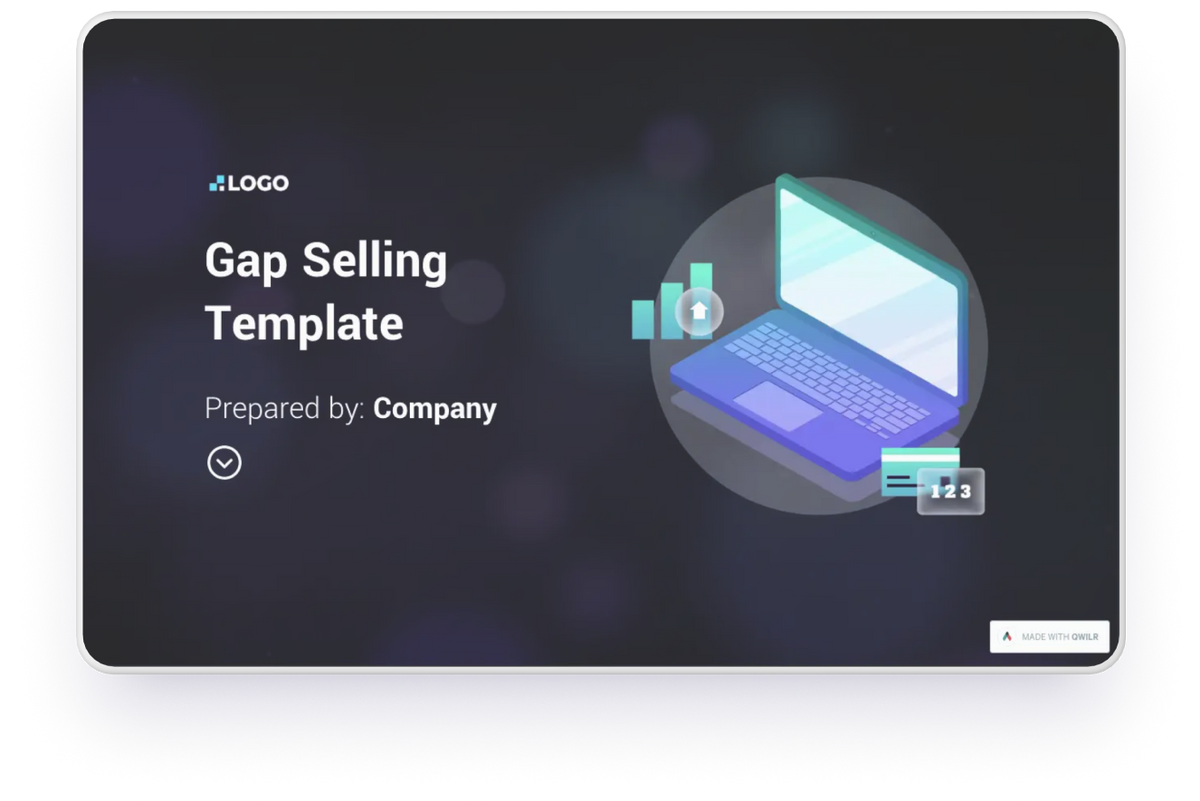
Gap sales uncovers your customer’s pain points by asking open-ended discovery questions. Sales reps need to understand five elements of the customer’s current state:
- What their environment is like
- The problem they’re trying to solve
- What impact this problem has on their business
- The root cause of this problem
- How their current state impacts their emotions
The goal of gap selling is to help the customer understand their challenges and the negative consequences of not addressing them. You then position your product or service as a solution to bridge the gap.
Using a gap analysis template is a great way to support your team in building a detailed picture of a prospect's current and desired future state.
Gap selling can help your sales reps:
- Build deeper relationships with your prospects by investing time in understanding their needs.
- Establish trust and credibility by demonstrating their expertise in bridging the gap your customers are experiencing.
- Present the value of your product or service in a way that feels tangible for your customers.
Gap selling can be a time-consuming and involved process. That means it isn’t the ideal sales method for transactional sales or retail businesses, where closing a sale quickly makes all the difference.
Instead, gap selling works best for companies that offer complex solutions, like B2B business. A gap analysis can be a big step towards establishing the value of a non-standard solution to a complex problem.
MEDDIC methodology
Qualify your prospects more precisely and close enterprise deals faster with the MEDDIC sales methodology.
Discover the template
MEDDIC is a six-step sales method. It stands for:
- Metrics: Find out the potential economic impact of your product for a prospect and how they will measure it.
- Economic buyer: Speak with someone who has decision-making power and controls the budget.
- Decision criteria: Understand the criteria your prospect is using to compare different vendors.
- Decision process: Determine how the decision will be made, including timeline, testing, and approval.
- Identify pain: Identify the key pain point the prospect is trying to solve.
- Champion: Find a champion in the company who stands to benefit the most from your product and who can sell it internally.
The six criteria enable you to calculate a score, providing a simple and structured way to qualify prospects. In practice, MEDDIC Sales is very effective:.
- It provides a way for your sales reps to evaluate the potential of a lead before investing time and resources into it.
- They can focus their attention on leads that have a high likelihood of converting into customers.
- It helps sales reps evaluate a lead's needs, goals, challenges, and decision-making process, enabling them to tailor their sales pitch and approach to each lead. This often leads to a higher close rate.
MEDDIC is particularly suited for streamlining complex B2B sales calls. It’s often used to close deals with an extended sales cycle and for large enterprise accounts.
It takes time and training to implement the MEDDIC sales process correctly, which makes it a bad fit if you’re selling to individuals or have limited resources. It also works best when your sales reps have a clear image of your ideal prospect and can disqualify prospects early in the sales process.
MEDDPICC methodology
Streamline complex B2B deals and qualify prospects with the MEDDPICC sales methodology.
Discover the template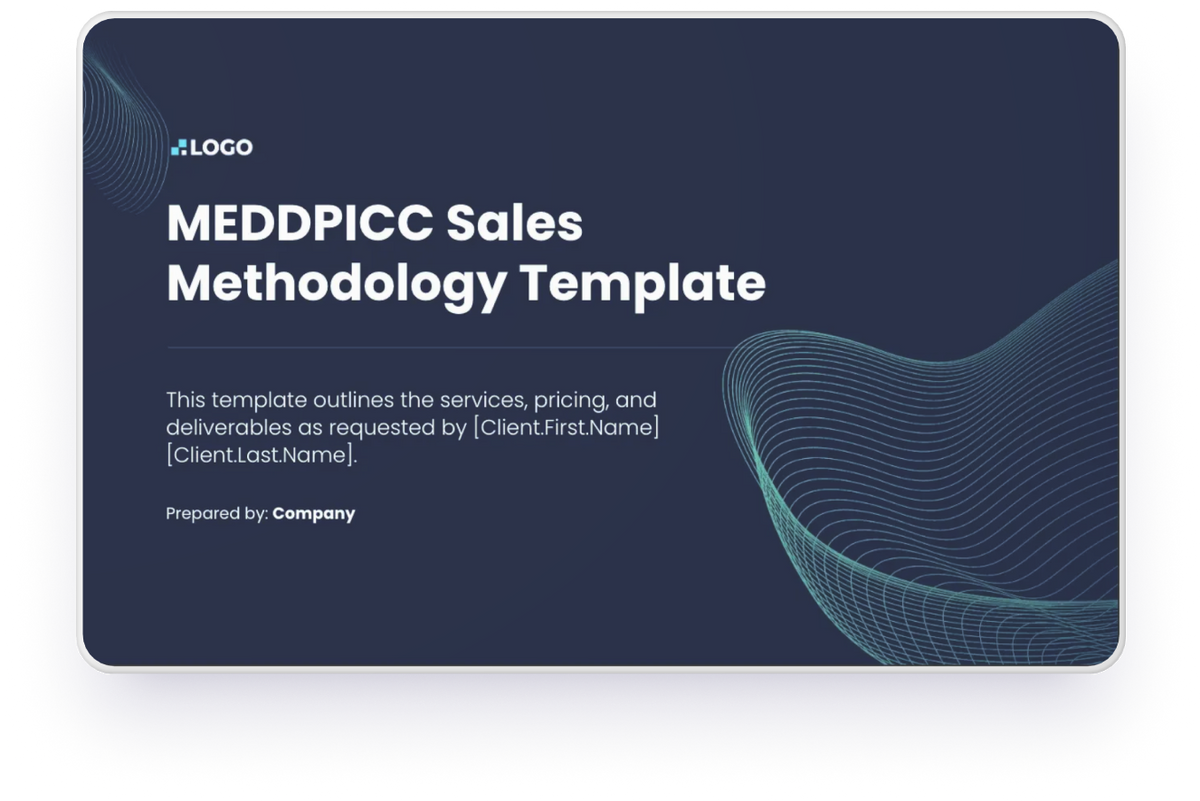
MEDDPICC Sales is derived from the MEDDIC sales framework, but introduces two additional steps to the methodology.
MEDDPICC involves eight questions:
- Metrics: What’s the potential monetary impact of your product on your prospect’s business and how will they measure it?
- Economic buyer: Are you talking to someone who can decide to purchase?
- Decision criteria: Do you know the criteria your prospect uses to compare different vendors?
- Decision process: What’s the decision-making process look like? How long will it take and will they need approval from anyone?
- Paper process: What are the steps to finalize the deal? This might include legal paperwork and compliance checks.
- Identify pain: What’s the cost of doing nothing for your prospect? What’s the need your product fulfills?
- Champion: Is there someone in the company with a vested interest in your product who can advocate for it internally?
- Competition: Are there any other organizations or vendors that are competing for the same budget?
MEDDPICC provides a structured and effective way to qualify prospects so your sales reps can:
- Develop a deep understanding of your prospects’ needs and decision process.
- Tailor their pitch to meet the customer's specific requirements and preferences.
- Work efficiently by focusing their attention on leads that are most likely to buy.
MEDDPICC is a complex and time-consuming methodology to implement, best for long sales cycles and large businesses. It’s particularly suitable if:
- Your deals get stuck in the paperwork stage and go through multiple approval chains.
- You’re competing with competitors for the same resources and funding.
When implemented successfully, MEDDPICC can help your sales team build more pipeline, shorten sales cycles, and increase their close rates.
BANT methodology
Empower your sales team and help them qualify prospects using the BANT sales methodology.
Discover the template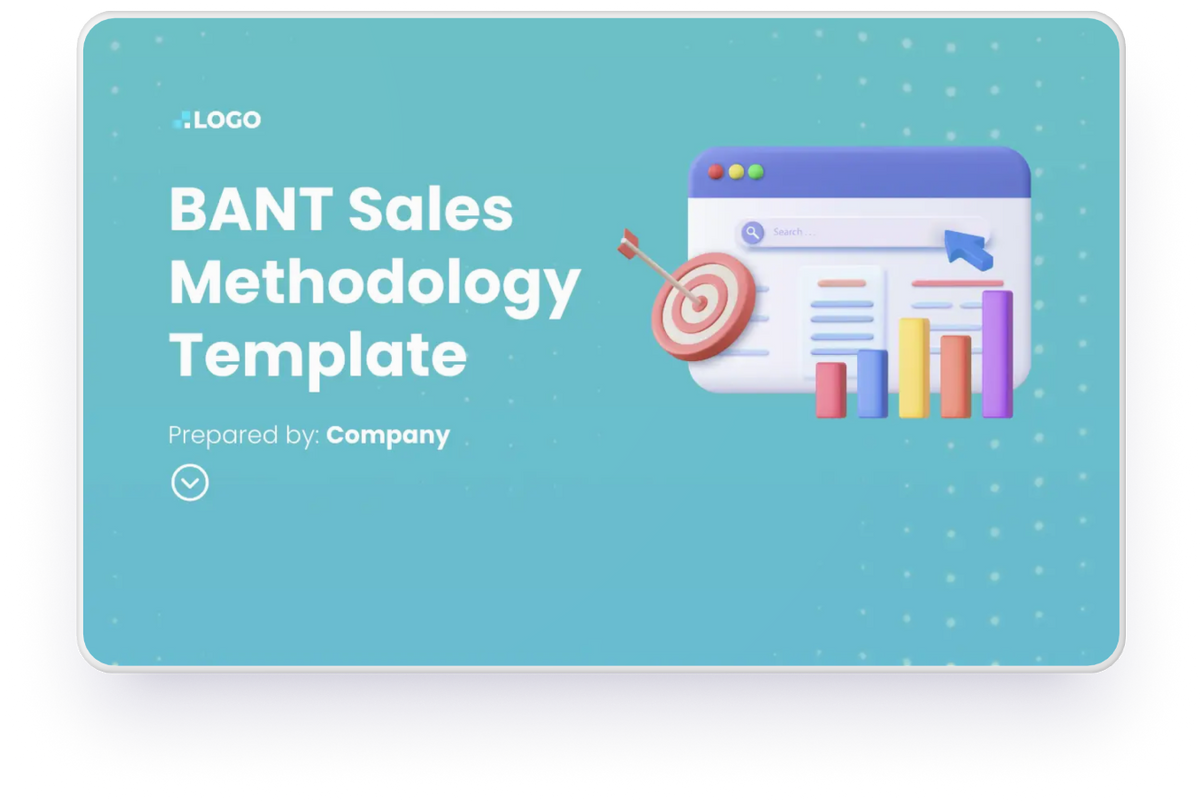
BANT qualification involves going through a set of criteria to decide if a prospect is likely to make a purchase. BANT stands for:
- Budget: Do they have sufficient budget for your product or service?
- Authority: Do they have authority to decide to purchase?
- Need: Do they need your product?
- Timeline: Do they have a clear timeline to close the deal?
If your team has to sift through many leads and a relatively low close rate, a BANT sales process might be a suitable solution. BANT enables your team to focus their efforts on the most promising prospects.
Typically, if a lead satisfies three of the four qualifiers, sales reps continue the conversation. Using BANT early in your sales process to disqualify prospects that don’t meet the criteria streamlines your whole process. Sales reps can spend more time building deeper relationships with prospects who are more likely to purchase.
The BANT method has its limitations, though:
- It’s possible that you inadvertently disqualify prospects who would purchase but haven’t yet defined a budget or timeline.
- It doesn’t consider the long-term value of building relationships with a potential customer. Someone might not have the budget to purchase now, but might secure it in the future.
- Since it involves qualifying prospects based on criteria, it’s tempting to treat BANT as if it’s a to-do list during a sales call.
BANT is about selling to people most likely to purchase in the short-term. It’s a great method to prioritize resources so you can invest in your most promising leads.
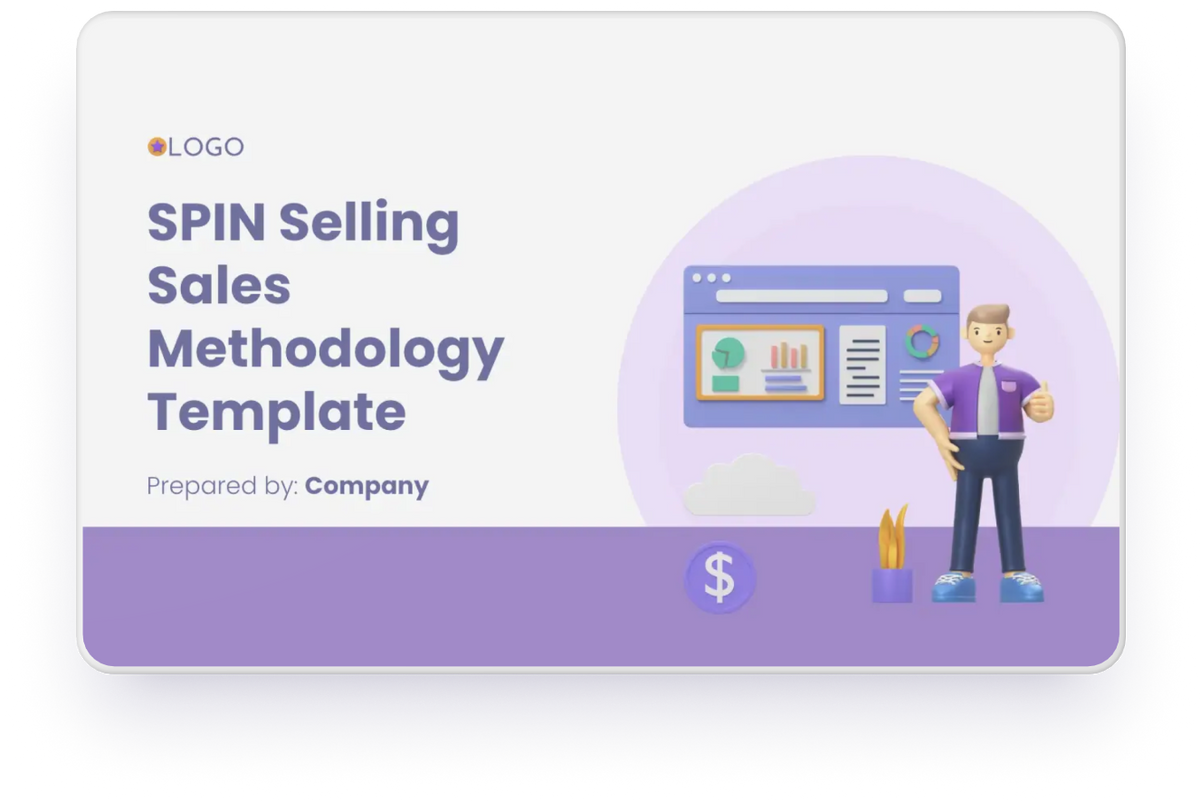
This SPIN selling summary will show you how to uncover your prospect’s needs through active listening.
SPIN is short for:
- Situation: Gathering information about the prospect’s current situation.
- Problem: Understanding the problem(s) they’re facing.
- Implication: Figuring out the real-world impact of their problems and creating a sense of urgency to solve it.
- Need Payoff: Establishing the benefit of solving the problem.
SPIN selling questions are always open-ended. The goal is to deeply understand your prospect’s needs and challenges before selling them your product as a solution to those problems.
It’s a great method to build trust and credibility with prospects, because it forces you to listen closely and develop a deeper and more sincere relationship with them. It helps ensure your prospect articulates the problem they’re hoping to solve.
SPIN selling is usually ideal for a complex or high-value product or service, because selling a complex product requires understanding your prospect’s pain points. Once you have a shared foundation and know their goals, you can better align your product with their needs.
While effective, SPIN selling has a few drawbacks. It can be:
- Time-consuming, especially if you have to get multiple stakeholders on board.
- Ineffective if your value proposition isn’t clearly defined or doesn’t match the prospect’s problem.
- Hard for less experienced sales reps to implement. Your reps need to understand the problems and solutions inside out and be skilled at in-depth, open-ended conversations.
In summary, SPIN selling is a powerful methodology for selling complex products to large organizations. Once you’ve learned to apply it effectively, you can use it to build strong relationships and create long-term value for your prospects.
Proof of concept methodology
Win more business by demonstrating the value of your product or service using the Proof of Concept method.
Discover the template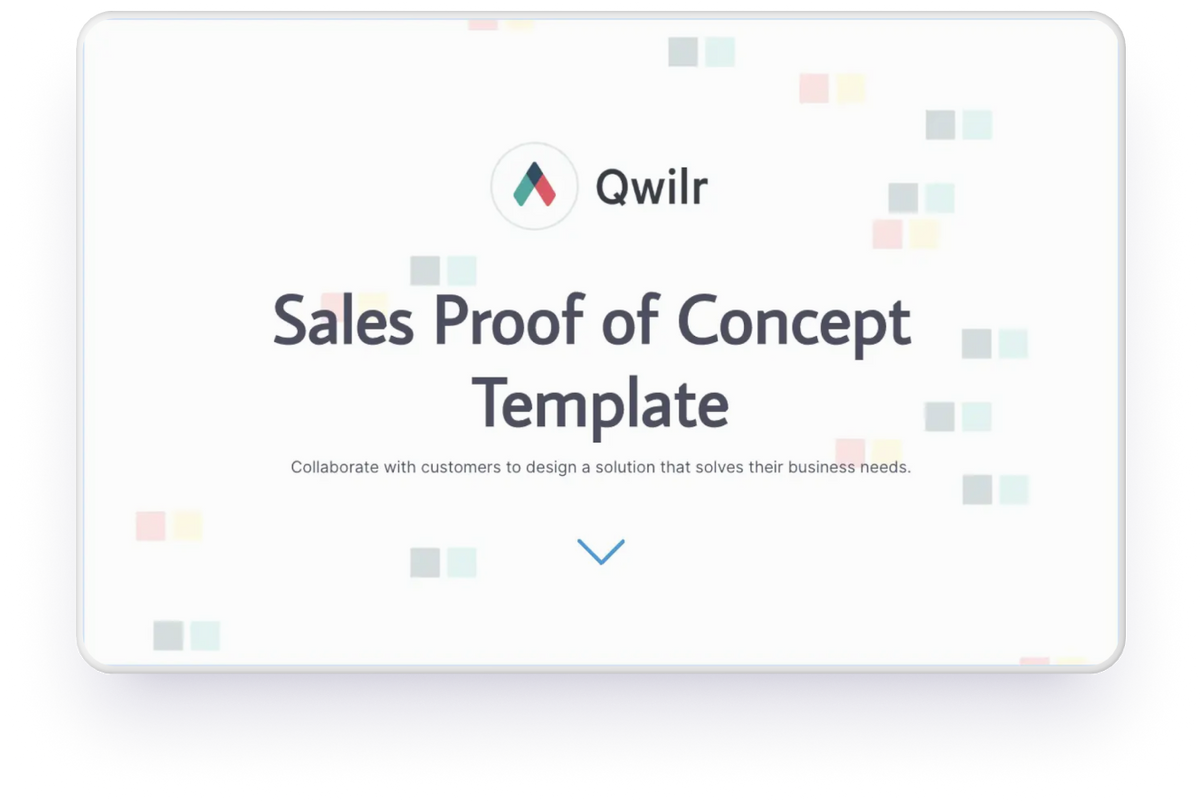
The Proof of Concept (POC) sales method helps you prove the feasibility of an idea or solution. It’s often the first step before developing a prototype, which becomes a minimum-viable product.
Proof of Concept examples could be:
- An interactive web-based proposal of a software solution
- Building a small section of a construction project to test different materials
- Running a brief marketing campaign to test an advertising strategy
It’s a highly effective method if you’re selling an innovative product or service.
A great Proof of Concept template showcases how and why your product is the right fit for a potential client. It can include:
- A business analysis covering the problem you want to solve
- Market and competitor research to prove market fit
- Resources needed to implement your solution
- Success metrics and KPIs
- Financial projections to show the cost and benefits
POC is popular in the software industry, where it’s used to make a case for the value proposition of the product. Testing a proof of concept means you gain customer feedback and can use that to improve your product. It’s a great way to build trust and credibility with your customers.
They’re also often used to attract investors. A well-written POC can help identify and avoid potential obstacles down the road and prove the product is financially viable.
Developing a POC can be expensive and time-consuming, so it’s only ideal for companies with the resources to spend on it. The success of the POC methodology often depends on the quality of the content and research involved.